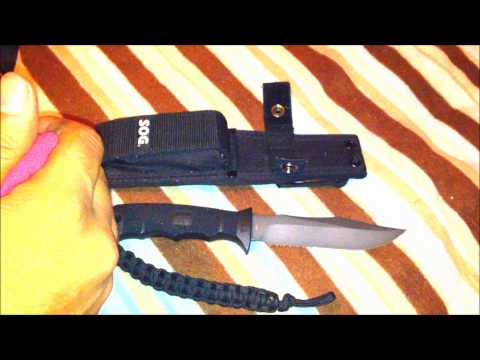
d47bfc90dcee8a02601521f86e3fdac8
Taking care of your knives is essential for keeping them in good condition and ensuring they last for years to come. One of the most important steps in knife maintenance is oiling the blade. Oiling your knife regularly will help protect it from rust and corrosion, and will also help keep it sharp. In this article, we’ll provide a step-by-step guide on how to oil a knife correctly. We’ll also discuss the different types of oil you can use and the best practices for oiling your knife.
What should I oil my knife with
Knives are essential tools for everyday use, and it is important to keep them in good condition. Oiling your knife regularly is one of the best ways to ensure that it remains sharp and in good condition. But what should you use to oil your knife?
The best oil for your knife is a light mineral oil, such as mineral oil or gun oil. These oils are designed to penetrate the metal of the blade and protect it from corrosion and rust. They also help to keep the blade lubricated, which can help to keep it sharp.
You should also avoid using vegetable oils, such as olive oil or coconut oil, as these can go rancid over time and can damage the blade. It is also important to avoid using WD-40, as this is not designed for use on knives and can damage the blade.
When applying the oil, you should use a soft cloth or paper towel to apply a thin layer of oil to the blade. You should also make sure to wipe off any excess oil, as this can attract dirt and debris.
It is also important to remember to oil your knife regularly, as this will help to keep it in good condition and ensure that it remains sharp. Oiling your knife every few months is usually enough, but if you use your knife frequently, you may need to oil it more often.
In conclusion, the best oil for your knife is a light mineral oil, such as mineral oil or gun oil. You should also avoid using vegetable oils, such as olive oil or coconut oil, and WD-40. When applying the oil, you should use a soft cloth or paper towel to apply a thin layer of oil to the blade and wipe off any excess oil. Finally, remember to oil your knife regularly to keep it in good condition and ensure that it remains sharp.
How often should you oil a knife
Knives are essential tools in the kitchen, and it is important to keep them in good condition. Oiling your knives regularly is one of the best ways to ensure they stay sharp and last for a long time. But how often should you oil your knives?
The frequency of oiling your knives depends on the type of knife and the material it is made from. For example, carbon steel knives require more frequent oiling than stainless steel knives. Generally, it is recommended to oil your knives every few months, or whenever you notice the blade is starting to rust.
When oiling your knives, it is important to use the right type of oil. Mineral oil is the most common type of oil used for knives, as it is food-safe and does not go rancid. You can also use vegetable oil, but it is not as effective as mineral oil and will need to be replaced more often.
To oil your knives, start by wiping them down with a damp cloth to remove any dirt or debris. Then, apply a thin layer of oil to the blade and handle. Use a soft cloth to rub the oil into the blade and handle, making sure to cover all surfaces. Finally, wipe off any excess oil with a clean cloth.
Oiling your knives regularly is an important part of knife maintenance. Doing so will help keep your knives sharp and in good condition for a long time. Make sure to use the right type of oil and to wipe off any excess oil after applying it.
How do you clean a knife step by step
Cleaning a knife is an important part of kitchen maintenance. A clean knife is essential for food safety and hygiene, and it also helps to keep your knife in good condition. Here are the steps to follow for cleaning a knife properly.
Step 1: Rinse the Knife
The first step is to rinse the knife with warm water. This will help to remove any food particles that may be stuck to the blade. Make sure to rinse both sides of the blade and the handle.
Step 2: Soak the Knife
Once the knife is rinsed, it should be soaked in warm, soapy water for a few minutes. This will help to loosen any dirt or debris that may be stuck to the blade. Make sure to use a mild dish soap and warm water.
Step 3: Scrub the Knife
Once the knife is soaked, it should be scrubbed with a soft brush or cloth. This will help to remove any dirt or debris that may be stuck to the blade. Make sure to use a gentle scrubbing motion and avoid using too much pressure.
Step 4: Rinse the Knife Again
Once the knife is scrubbed, it should be rinsed again with warm water. This will help to remove any soap residue that may be left on the blade. Make sure to rinse both sides of the blade and the handle.
Step 5: Dry the Knife
Once the knife is rinsed, it should be dried with a soft cloth. This will help to prevent rust and corrosion. Make sure to dry both sides of the blade and the handle.
Step 6: Store the Knife
Once the knife is dry, it should be stored in a safe place. This will help to keep the knife in good condition and prevent it from becoming damaged. Make sure to store the knife in a dry place and away from any moisture.
Following these steps will help to ensure that your knife is properly cleaned and maintained. Cleaning your knife regularly will help to keep it in good condition and ensure that it is safe to use.
Can I use WD-40 on my knife
WD-40 is a popular multi-purpose lubricant and cleaner that is used for a variety of tasks. It is often used to lubricate and protect metal surfaces, and it can also be used to clean and protect knives. But is it safe to use WD-40 on your knife?
The short answer is yes, you can use WD-40 on your knife. It is safe to use on most types of knives, including stainless steel, carbon steel, and ceramic blades. WD-40 can help protect your knife from rust and corrosion, and it can also help to keep the blade lubricated and reduce friction. However, it is important to note that WD-40 is not a lubricant, so it should not be used as a substitute for a proper knife oil.
When using WD-40 on your knife, it is important to follow the instructions on the label. You should always wear protective gloves and safety glasses when using WD-40, and you should never spray it directly onto the blade. Instead, spray it onto a cloth and then wipe it onto the blade. You should also avoid using WD-40 on wooden handles, as it can damage the wood.
In addition to using WD-40 on your knife, it is also important to regularly clean and maintain your knife. This includes sharpening the blade, cleaning the blade and handle, and applying a proper lubricant or oil. Doing so will help to keep your knife in good condition and ensure that it performs optimally.
In conclusion, you can use WD-40 on your knife, but it should not be used as a substitute for a proper lubricant or oil. It is important to follow the instructions on the label and to regularly clean and maintain your knife to ensure that it performs optimally.
We hope this guide has been helpful in teaching you how to oil a knife. Taking the time to oil your knife regularly will help keep it in good condition and make it last longer. Until next time, goodbye and take care!
















